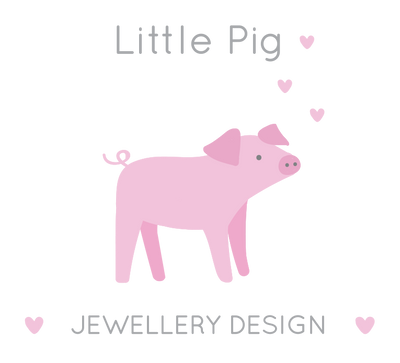Skip to content
As an independent business owner, I am able to make decisions about the impact and continued commitment to running a sustainable and environmentally aware company. The planet is precious and I aim to continually reduce my carbon footprint, waste and recycle. I work with other companies whose values align with mine to make quality products that will stand the test of time and be packaged in environmentally friendly ways. I design, make and ship all the jewellery myself, in my workshop in the UK and use UK companies for all the packaging and materials that go into creating your pieces with love. The Post Office that fulfils your orders is only a few miles from Little Pig HQ.

My packaging includes high-quality gift boxes that are super eco-friendly, being made from 99% recycled material and they are recyclable. The pink Little Pig Jewellery Design boxes contain a removable recycled non-tarnish eco-fibre insert which will maintain your jewellery.
The boxes that each piece of jewellery come in:
-
100% Recycled
-
Box board consists of 100% recycled materials
-
100% recycled Non-tarnishing white eco-fibre filler
-
Paper wrap material is 100% recycled and Process Chlorine Free (PCF)
When shipping your orders, I use mailing envelopes that are recycled and from sustainable sources also. Inside your box of Little Pig Jewellery, you will find pig shaped confetti that has been punched from envelopes, brochures, tissue paper and other fun materials that I have received when purchasing from other places or that have been sent to me - nothing goes to waste!
Your jewellery is protected in eco-friendly oxodegradable bubble wrap that is manufactured in such a way that it ensures that when disposed of, it degrades quickly.

Little Pig Jewellery is made from Perspex acrylic. Perspex and acrylic are essentially the same thing. Perspex acrylic is a premium branded acrylic and, as such, is manufactured to the highest industry standards possible. Perspex acrylic has an enviable reputation as the very best acrylic available. When I design and make jewellery using Perspex, it is made to last and is not a throwaway plastic item.
I keep all offcuts and 'waste' from the acrylic jewellery that I make. These offcuts are used to make intricate parts of other pieces of jewellery and the remaining parts are stored in the workshop. I will be recycling these small pieces in house to produce new sheets of acrylic that can be used, leaving no waste. More information on this process and the methods for doing this can be found via Off Cut Studio, who deliver training and signpost the equipment that is required to create recycled materials to be used for future projects.
From the product itself to the way it is produced, packed and shipped Perspex put environmental, economic social and cultural considerations at the heart of their strategic planning process. They are passionate about continuous improvement, reducing their environmental footprint and leading the way in innovation and fresh thinking.
The outstanding performance characteristics of Perspex cell cast acrylic mean that it offers outstanding durability, giving a longer lifespan and less frequent requirement for replacement. It is also a non-toxic, pure material that is easy to reuse or recycle whatever the colour or aesthetic effect.
With over a 97% manufacturing efficiency and a flexible production process, they continually strive to maximise efficiencies in manufacturing. Add the fact that they send zero acrylic waste to landfill and that they have recently made a significant investment to reduce their water consumption during production by more than 24 million litres per year, then it is easy to see that they are never wasteful and always believe in going further.
Committed to creating as little waste as possible and sending less and less to landfill, they are well on their way to achieving their aim of sending absolutely zero waste to landfill. Amongst the improvements they have made they:
• Reduce the amount of fibreboard they use in packaging
• Recycle all kinds of waste from gasket tails, masking and fibreboard to metal filters and wood
• Have situated their manufacturing and warehouse operations in close proximity to one another to minimise internal transport
• Wherever possible they source raw materials locally to minimise product miles




